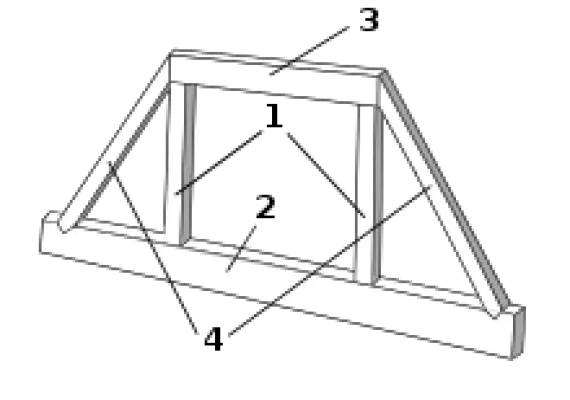What Are Structural Cables In Construction?
What Are Structural Cables In Construction?
Structural cables are flexible structures in pure tension, used to support applied transverse loads by the tensile resistance developed in their members.
They take different shapes depending on the application and can be used for bridges, offshore platforms, suspension bridges, and other engineering applications.
Cables cannot resist shear, bending, or compressive forces but they transfer all loads in tension along their lengths.
The cable lengths and tensions must be determined from the geometry of the structure before being loaded laterally.
In structures using a surface-stressed cable, the cables are first prestressed against the supporting members to create a state of self-stress before being loaded laterally.
What Are Examples Of Cable Structures?
Examples of cable structures include the suspension bridge, the cable-stayed roof, and the bicycle-wheel roof.
The suspension bridge is a type of cable structure where the deck’s weight is supported by several tensioned, nearly straight, diagonal cables that run parallel to one or more vertical towers.
The cable-stayed roof uses steel beams or trusses as supports and has the capacity to carry only axial loads.
Finally, the bicycle-wheel roof uses strings or cables stretched freely between two points which take on the shape of a catenary.
What Material Is The Structural Cable?
Structural cables can be made of mild steel, high-strength steel (drawn carbon steel), and stainless steel, polyester, or aramid fibres.
Steel wire rope is often supplied with a braided polyester or nylon jacket, while duplex high-strength stainless steel grade 2205 prestressing strand and austenitic stainless steel grade 304 spiral wire are also used for cable systems.
Aramid fibre is the best material for marine cable systems due to its superior strength and durability.
What Are The Six Components Of Structured Cable?
The six components of structured cabling are Entrance Facilities, Equipment Room, Backbone Cabling, Telecommunications Room, Horizontal Cabling, and Work Area. These components provide a convenient framework for installing voice and data communications equipment in buildings or campuses, simplifying the installation process. Structured cabling also allows for future expansion by providing an easy-to-install system that is compatible with new technologies such as fiber optic cables. Additionally, it provides flexibility to accommodate changes in technology over time.
What Are The Characteristics Of Cable Structure?
Cable structures are flexible structures in pure tension with the funicular shape of the load. They have high tensile strength but no resistance to compression or bending and must be cut to calculated lengths for the structure, taking into account both elastic stretch and inelastic forces.
The funicular shell design is also used for cable structures, which extends the discussion to several types of funicular structures in pure tension.
What Are The Advantages Of Cable Structures?
They have several advantages, including being lightweight and cost-effective, having multiple design options from which to choose, offering the possibility of a symmetrical design, and providing flexibility in terms of length and span configurations.
Additionally, cable-stayed bridges can be constructed with minimal environmental impact due to their use of prefabricated components such as PEAD ducts and wax stored in collective tanks. However, there are also some disadvantages associated with cable-stayed bridges.
These include difficulty inspecting them due to their complex nature, limited durability due to corrosion over time, and potential for damage during construction or operation.
What Are The Disadvantages Of Cable Structures?
Disadvantages of cable structures include their short maximum length (around 1,000 meters), difficulty inspecting them, susceptibility to corrosion and only being economically viable for short or medium-distance needs.
Additionally, they may never be used for longer distances or when the facility is concerned with safety.

